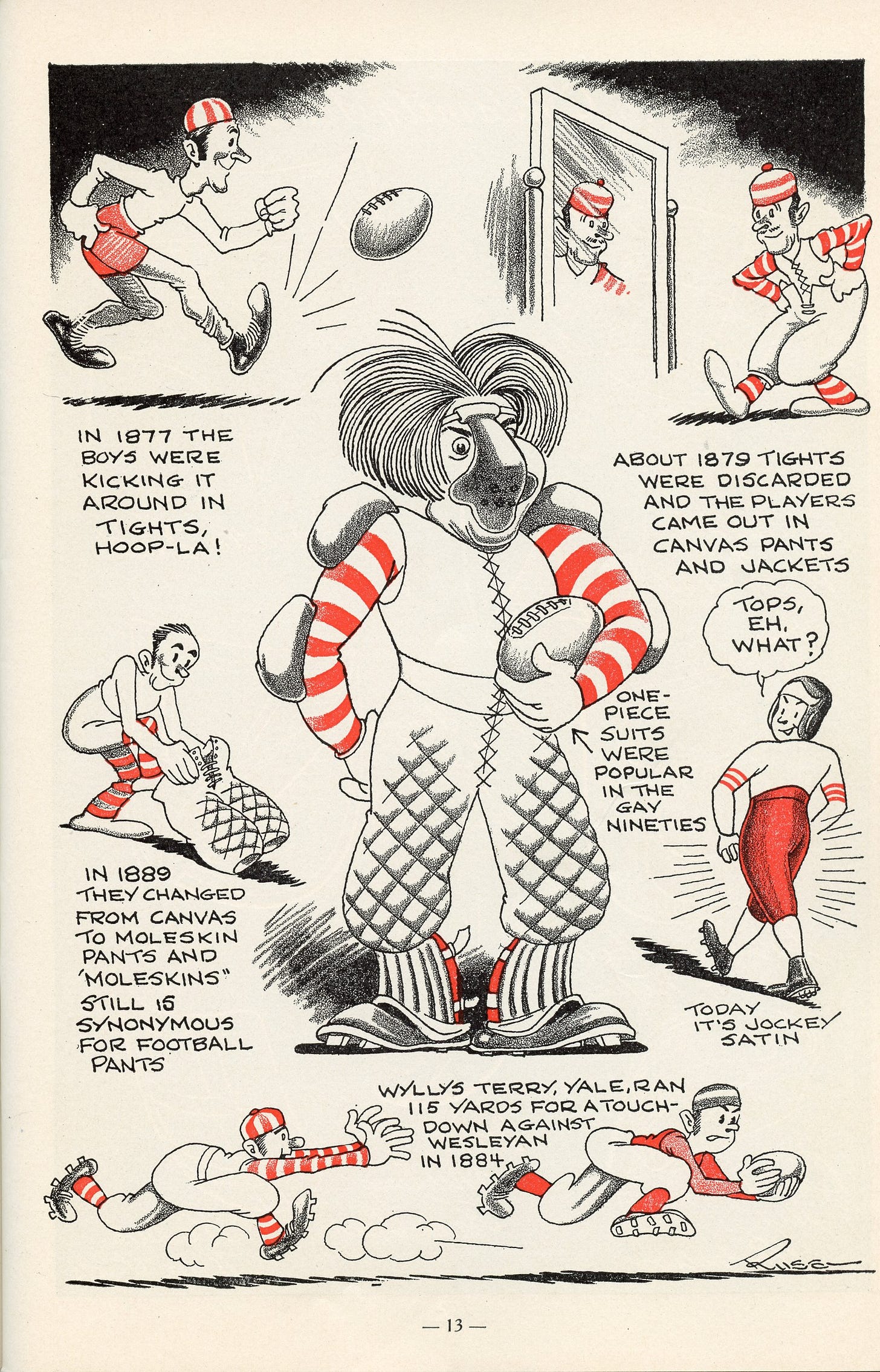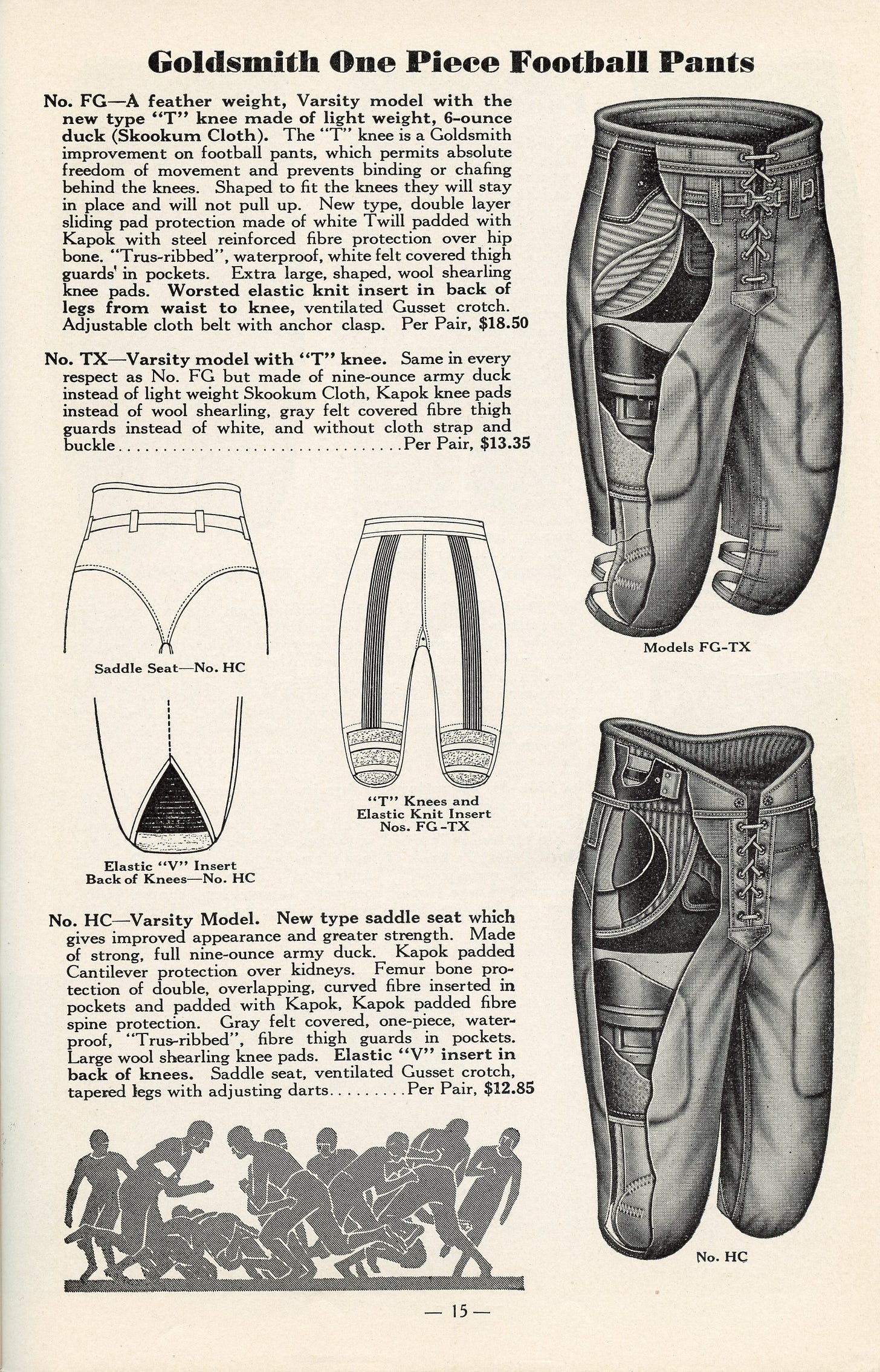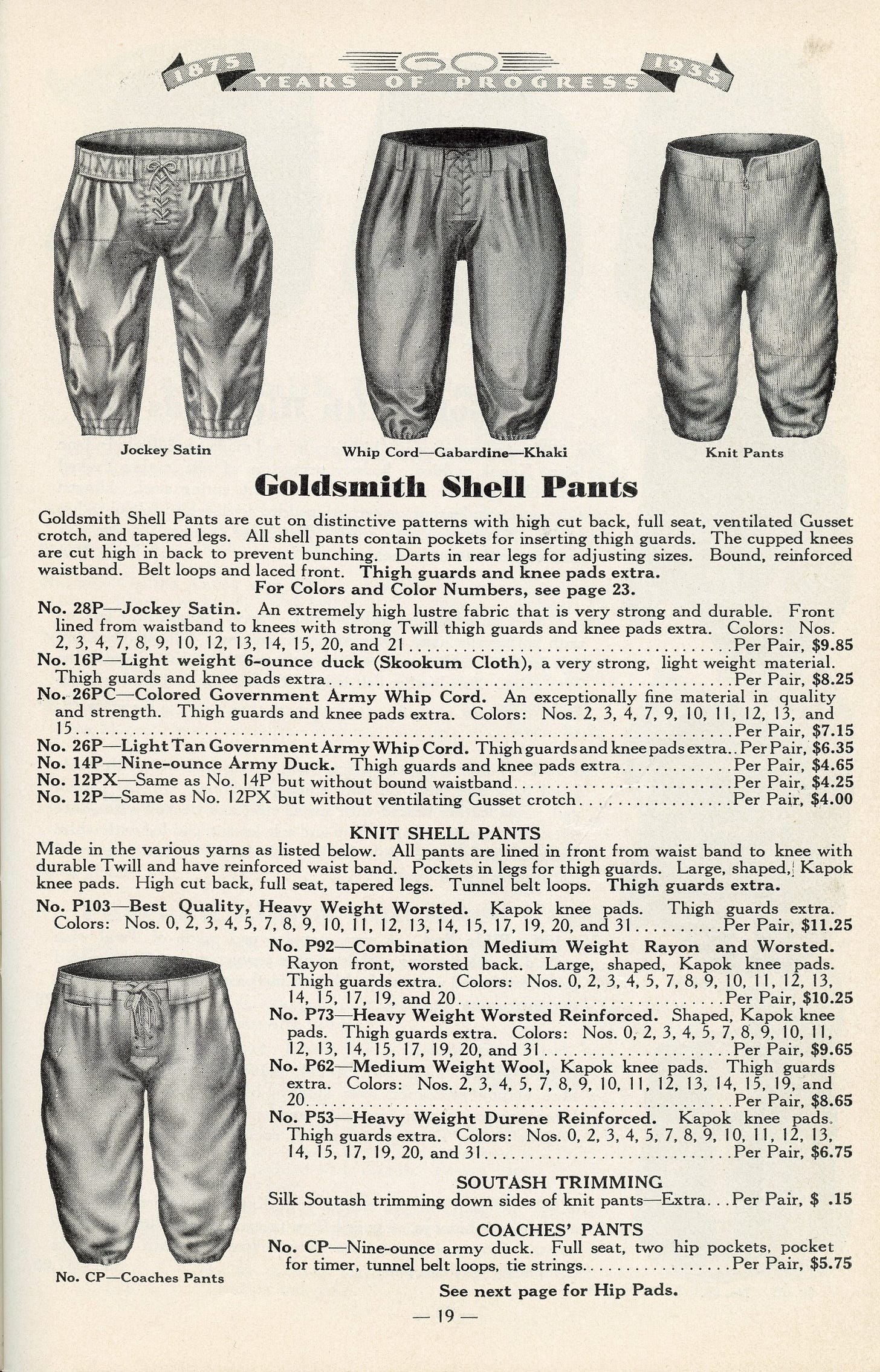Today's Tidbit... 1935 GoldSmith Sports Equipment Pants
This is the fourth of seven articles in a series covering the 1935-36 Fall & Winter GoldSmith Athletic Equipment catalog. Preceding each section of the catalog is a one-page cartoon about the history of that type of equipment, in today's case, football pants.
Click the appropriate link for other stories in the series:
Consulting Staff | Footballs | Shoes | Pants | Jerseys | Helmets | Shoulder Pads | Miscellaneous
The pants cartoon summarizes the history of football uniforms, generally, and pants in particular, before 1935. However, most players wore canvas pants after moleskins arrived because canvas was less expensive. Still, both fabrics consist of water-absorbent cotton, so they became heavy when playing in wet conditions or when players sweat, which was virtually every game.
Page 15 highlights the difference between the waist-line pants that became the norm in the 1930s versus the high-waist, kidney-protecting pants that gained popularity in the mid-1910s. The pants were increasingly form-fitting with the kapok and felt pads covered in waterproof materials to limit water absorption. The elastic inserts running up the back of the leg functioned to tighten the pant leg while contributing to football’s ugliest decade for uniforms.
These one-piece pants had all appropriate pads integrated into the pants rather than the pads being separate units, an approach that began in the 1920s.
Shell pants represented the disaggregation approach. They were outer garments with internal pockets for thigh, knee, and hip pads that could be mixed and matched based on player preferences. The shells and coach-specific shells with external pockets became standard practice gear for coaches over the next 30 years.
The shell pants did not have internal pockets for the separate hip pads since they were cinched on with a belt. Knee pads were inserted into the interior pockets or worn separately, as they might be by basketball and volleyball players. The separate knee pads worked with traditional-length football pants and those a tad shorter, as shown in The Long History Of Football's Short Pants. (The current short pants fad is nothing new.)
Although not part of the pants per se, stockings decorated and offered protection for players' legs. Stockings have come and gone on football legs throughout the game's history, though a key moment came in 1945 when NFL Commissioner Elmer Layden mandated that all players wear stockings. The NFL has continued with that rule ever since.
In many respects, the form football pants took by 1935 mirrors those worn today, though their materials have changed dramatically. Pants were made of airplane silk, satin, nylon, rayon, and any number of artificial fabrics, while a substantial reduction in the size and weight of pads also occurred. Only time will tell whether football pants evolve in a previously unseen direction.
Football Archaeology is reader-supported. Click here to buy one of my books or otherwise support the site.







They should never have gotten rid of those hose or the accompanying knickers.
It is hard to believe but right up through the early 1990s officials at the high school and college levels still wore the hose similar to the ones in the last ad shown.